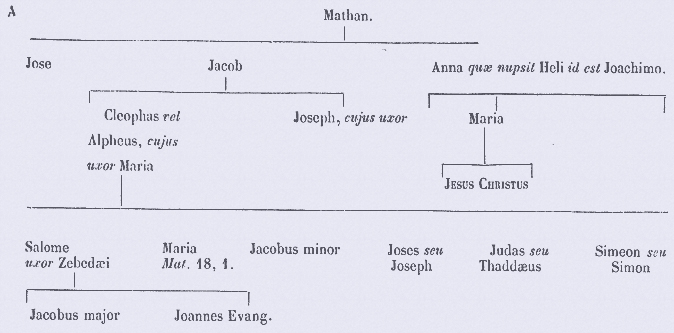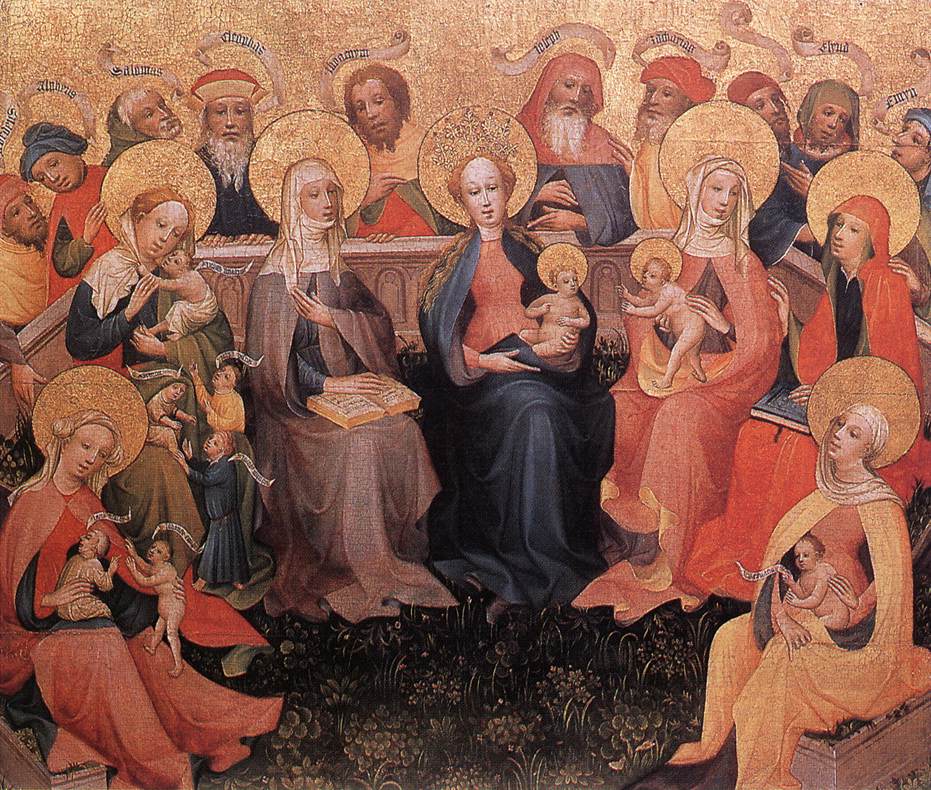The Holy Kinship
There were already images of what came to be called the "Holy Kinship" in the 12th century (example), and it was further popularized when the Golden Legend included it in the chapter on Mary's birth. It was especially popular in Germany. A splendid 14th-century window at Regensburg Cathedral presents it in detail, and in the 16th century Germany saw an effusion of paintings and sculptures on the subject. They are not hard to distinguish from other images of grouped saints. For one thing, the women will be accompanied by small children – one each for Elizabeth and the Virgin, two for Mary Salome, and four for Mary's other sister, the one Mark calls "the mother of James [the Less]." The husbands, apocryphal and otherwise, are often arranged in a space separated from the women by a waist-high barrier.

The German vogue for Holy Kinship images extended to images of smaller subsets of the family, for example this sculpture of Mary the wife of Alpheus and their children.
Prepared in 2016 by Richard Stracke, Emeritus Professor of English, Augusta University. Revised 2017-11-1.
HOME PAGE
The Holy Kinship, 15th century. Please see the description page for a "who's who" of the figures in the painting.
ALSO SEE
GENEALOGY
- Golden Legend #131
